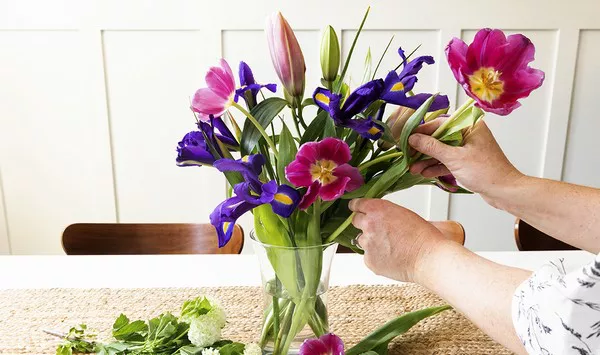Preserving the delicate beauty of flowers through the art of pressing is a timeless and captivating hobby. Whether you’re a seasoned enthusiast or a beginner, the question of how long it takes to press flowers is a common one. The answer, however, depends on several factors, including the flower type, size, and your chosen pressing method.
Understanding the Art of Pressing Flowers
Pressing flowers is a delightful way to capture the fleeting beauty of blooms and create lasting works of art. This art form dates back centuries and has been used for everything from scientific documentation to sentimental keepsakes. The process of pressing flowers involves flattening and drying them to preserve their form, color, and texture. The result is a pressed flower that can be used in a variety of crafts, such as making greeting cards, decorative art, and botanical collections.
Factors Affecting the Time Required
Several factors influence the amount of time it takes to press flowers effectively. These factors include:
Flower Type: The type of flower you choose to press plays a significant role in determining the pressing time. Thin, delicate flowers like pansies and violets press more quickly than thicker, fleshy blooms such as roses or daisies.
Flower Size: Smaller flowers will generally take less time to press than larger ones. Larger flowers may require more time and pressure to achieve satisfactory results.
Humidity and Temperature: The climate and environmental conditions in your area can influence the pressing time. High humidity and lower temperatures can slow down the drying process, while low humidity and higher temperatures can expedite it.
Pressing Method: There are various methods of pressing flowers, each with its own set of time requirements. The most common methods include traditional pressing with books, using a flower press, or microwaving.
Methods of Pressing Flowers
Let’s delve into the various methods of pressing flowers and explore the timeframes associated with each one.
1. Traditional Pressing with Books
This method is a classic and cost-effective way to press flowers. It involves using heavy books to compress and dry the flowers. Here’s how to do it:
Place the flowers between the pages of a heavy book, making sure they are not touching each other.
Add weight on top of the book, such as more books or other heavy objects.
Leave the flowers undisturbed for several weeks, periodically checking for dryness.
Time Required: Traditional pressing with books typically takes two to four weeks. Thin, delicate flowers may be ready sooner, while thicker blooms may need more time.
2. Flower Press
A flower press is a specialized tool designed for pressing flowers. It usually consists of wooden frames with layers of cardboard or blotting paper between which the flowers are placed. This method offers controlled and consistent pressure for even drying.
Arrange the flowers between layers of absorbent paper in the flower press.
Tighten the press to apply even pressure on the flowers.
Check the flowers periodically, and when they are dry, carefully remove them.
Time Required: Using a flower press can significantly expedite the process, taking one to three weeks for most flowers, depending on their type and thickness.
3. Microwave Pressing
Microwave pressing is a modern and relatively quick method for pressing flowers. It involves using a microwave-safe container filled with absorbent material and a small amount of water.
Place the flowers between layers of absorbent paper inside a microwave-safe container.
Add a small amount of water to the container.
Microwave in short intervals until the flowers are dry, checking regularly to avoid overheating.
Time Required: Microwave pressing is the fastest method, with flowers often drying within minutes to a few hours. It is essential to monitor the process carefully to prevent overheating or scorching the flowers.
4. Silica Gel Pressing
Silica gel is a granular, moisture-absorbing substance that can be used to press and dry flowers. This method provides a fast and efficient way to preserve flowers while maintaining their natural color and shape.
Place the flowers in a container and gently pour silica gel over them, ensuring they are completely covered.
Seal the container and leave it undisturbed for several days.
Carefully remove the flowers from the silica gel.
Time Required: Silica gel pressing can take several days to a week, depending on the type and thickness of the flowers. It is a faster method compared to traditional pressing with books.
Tips for Successful Flower Pressing
To achieve the best results while pressing flowers, consider the following tips:
Select Flowers at Their Peak: Flowers that are freshly bloomed and at their peak of beauty are the best candidates for pressing. Avoid using flowers that are wilted or damaged.
Prepare Flowers Properly: Remove excess moisture and cut stems to the desired length before pressing. Flowers with thick centers may benefit from gentle splitting to facilitate drying.
Choose the Right Method: Select a pressing method that aligns with your desired outcome and the time you have available.
Patience is Key: Allow the flowers to dry completely to prevent mold or color distortion. Avoid opening the press or container prematurely.
Record and Label: Keep a record of the types of flowers you press, as well as their pressing dates, to create a botanical reference.
Conclusion
The art of pressing flowers is a delightful and rewarding endeavor that allows you to capture and preserve the beauty of blooms for years to come. The time it takes to press flowers depends on several factors, including the flower type, size, and the pressing method you choose. Whether you opt for traditional pressing with books, a flower press, microwave pressing, or silica gel pressing, the key to successful results lies in patience, attention to detail, and a love for botanical beauty. So, gather your favorite blooms, choose your preferred pressing method, and embark on a journey of creativity and preservation as you transform fleeting floral moments into timeless pieces of art.


